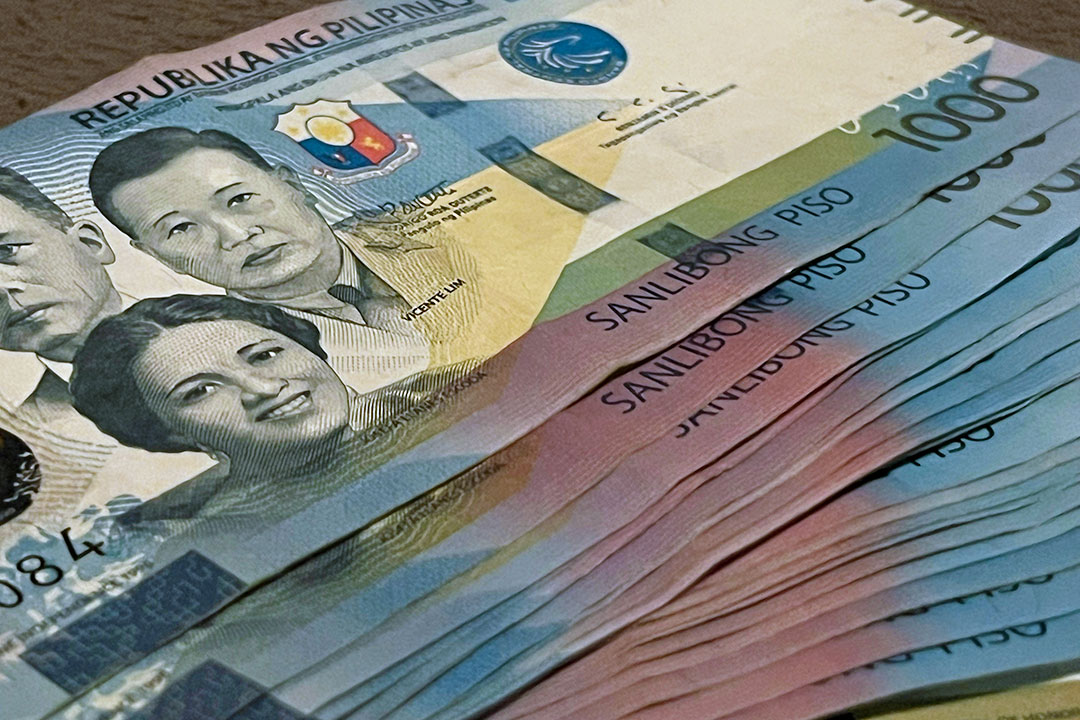




Philippines Trade Update: Trade trajectories trend along
 DOWNLOAD
DOWNLOAD

Policy Rate Updates: Double cut finale
 DOWNLOAD
DOWNLOAD

Monthly Economic Update: One for the road
 DOWNLOAD
DOWNLOAD


Government borrowings climb 40% in August

The national Government’s (NG) gross borrowings rose by 40.28% year on year in August as domestic debt jumped on increased issuances of government securities, the Bureau of the Treasury (BTr) reported.
Treasury data showed that gross borrowings increased to PHP 174.03 billion in August from PHP 124.06 billion in the same month a year ago.
However, month on month, state borrowings declined by 7.75% from PHP 188.65 billion in July.
Domestic debt accounted for the bulk or 95.98% of the government’s gross borrowings last month, Treasury data showed.
Gross domestic borrowings surged by 42.33% to PHP 167.05 billion in August from PHP 117.37 billion in the same month in 2023.
Broken down, domestic debt in August consisted of PHP 140 billion in fixed-rate Treasury bonds (T-bonds) and PHP 27.05 billion in net issuances of Treasury bills (T-bills).
These were higher than the PHP 110.235 billion in T-bonds and the net PHP 7.139 billion in T-bills issued in the same month last year.
On the other hand, gross external borrowings also rose by 4.64% to PHP 6.99 billion in August from PHP 6.68 billion a year ago, according to BTr data. This was entirely made up of new project loans.
Rizal Commercial Banking Corp. Chief Economist Michael L. Ricafort attributed the higher borrowings for the month to increased issuances amid maturing debt.
“The increase in the NG gross borrowings may have been attributed to higher maturing debt in August 2024 that required new borrowings to serve the matured government securities,” he said in a Viber message.
Year to date, gross borrowings as of end-August increased by 16.97% to PHP 1.93 trillion from PHP 1.65 trillion in the same period in 2023, Treasury data showed.
For the first eight months, 85.49% of NG borrowings came from the domestic market.
Gross domestic borrowings jumped by 32% to PHP 1.65 trillion in the period from PHP 1.25 trillion a year ago.
These were made up of PHP 904.21 billion in fixed-rate T-bonds, PHP 584.86 billion in retail Treasury bonds, and PHP 161.7 billion in net issuances of T-bills.
On the other hand, external gross borrowings dropped by 28.41% to PHP 282.46 billion as of August from PHP 394.56 billion in the comparable year-ago period.
Broken down, these consisted of PHP 115.25 billion in global bonds, PHP 100.5 billion in program loans, and PHP 66.72 billion in new project loans.
“Borrowings increased due to the persistent budget deficit, albeit narrowing due to fiscal consolidation,” John Paolo R. Rivera, senior research fellow at the Philippine Institute for Development Studies, said in a Viber message. “It can also be due to increased funding requirements given unforeseen outlays like calamity response, reconstruction, among others.”
The government’s budget deficit narrowed by 4.85% to P697 billion in the January-August period from PHP 732.5 billion a year prior.
“For the coming months, NG debt borrowings and debt servicing could be tempered by the narrower budget deficit recently, and further US Federal Reserve rate cuts in the coming months that could be matched locally,” Mr. Ricafort added.
The Fed this month started its long-awaited easing cycle with a 50-basis-point (bp) cut, bringing its target rate to the 4.75-5% range. Markets are pricing in more reductions at the US central bank’s Nov. 6-7 and Dec. 17-18 reviews.
Meanwhile, BSP Governor Eli M. Remolona, Jr. last week said the central bank could deliver a 25-bp cut at each of its remaining meetings for the year scheduled for Oct. 17 and Dec. 19.
The Monetary Board in August reduced borrowing costs by 25 bps, bringing the key rate to 6.25% from the over 17-year high of 6.5%. This marked its first easing move in nearly four years.
For this year, the NG plans to borrow PHP 2.57 trillion, with 75% coming from local sources and 25% from external sources, to help fund its PHP 1.48-trillion budget deficit that is equivalent to 5.6% of gross domestic product. — Beatriz Marie D. Cruz
This article originally appeared on bworldonline.com





 By BusinessWorld
By BusinessWorld